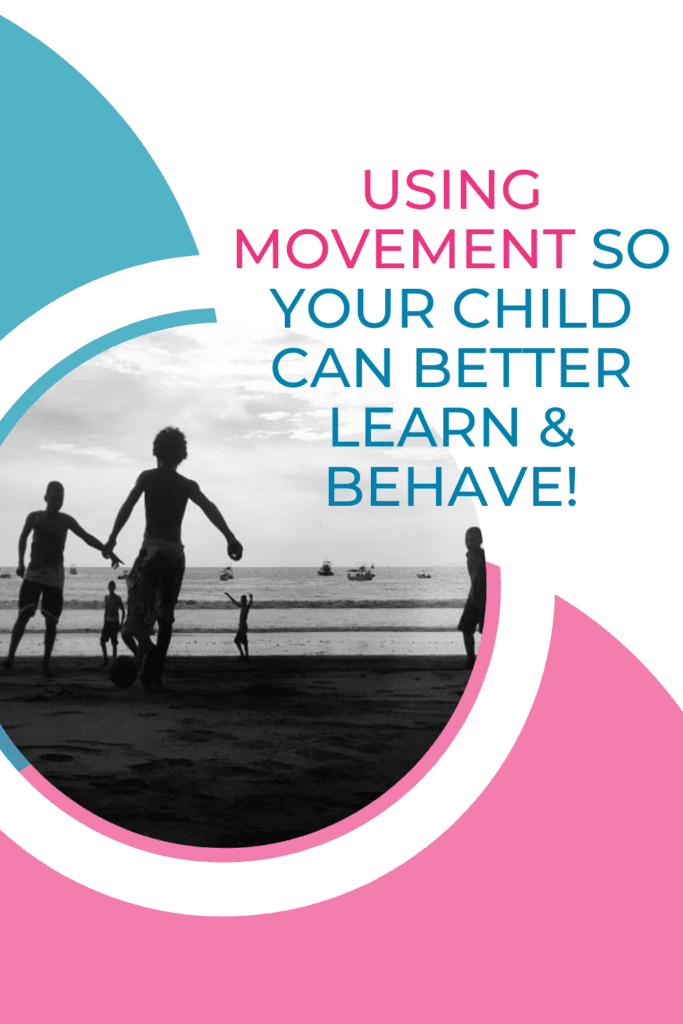You have heard thousands of times how movement is good for circulation and heart health, but many parents are surprised to hear about the significant impact that movement–specific movements–can have on improving their child’s ability to stay calm, focused and to effectively learn.
Problems with Fine & Gross Motor Skills
Poor coordination, balance, fine motor skills and low muscle tone are a hallmark of children with learning and behaviour challenges. This shows up as anything from poor handwriting and art skills, clumsiness, constant fidgeting and many other habits that can be everything from mildly irritating to a complete inability to learn or self-regulate behaviour.
These kids might even be excellent athletes, but have poor hand writing, self-control or body awareness. I have taught many a student who is an excellent athlete, but cannot sit still in class and has poor fine motor skills necessary for good penmanship. Frequent meltdowns, sensory overload, learning difficulties and poor attention can all originate in a lower brain that is underdeveloped.
It’s Never too Late to Change the Brain – It Starts with Developing the Lower Brain Levels
When I tell parents this–their first reaction is panic. Many are still of the outdated belief that the brain cannot be changed–but that’s imply not true. In his New York Times bestselling book, The Brain That Changes Itself, Dr. Norman Doidge, explains how science has shown irrefutably that the brain can change and that the lower brain levels can be developed.
When the lower brain levels are developed, the cortex is no longer doing its job and that of the lower brain levels; it can do its job–that is of more intellectual and higher order thinking.
Movement Develops the Brain
From infancy, different movements target, stimulate and develop specific areas of the brain and can create changes. Science has found that learning and movement are both processed in the same area of the brain.
Children with ADHD and learning difficulties often skip milestones like rolling, creeping or well-developed crawling. These basic movements are critical to developing the lower brain levels so higher brain levels can function optimally. Insufficient tummy time due to the overuse of walkers, saucers, baby swings and other well intentioned inventions are taking away from movement that is critical to brain development in the first year of life.
Creeping, Crawling & All That Tummy Time Develops a Well-Organized Brain
Problems with the inner ear have been found to be one of the factors involved in learning difficulties and ADHD. Interestingly, rolling and crawling have been found to help improve reading and attention which should come as no surprise since these same activities stimulate the inner ear or vestibular system.
Different movements help to merge the right and left sides of the brain, as well as top to bottom and front to back. When the brain is not working in an interconnected way, problems with learning and behaviour can result. A whole-brained child learns well, is calm, focused and happy.
If your child walks before they have met these milestones than areas of the brain connected to those movements do not fully develop. These areas can relate to self-control, skills necessary to read, focus and filter out distractions. Movement therapy helps to ‘wake-up’ areas of the brain that are underdeveloped through exercises that simulates an infant’s earliest movements.
Start Building a Better Brain at Home
To prevent missed milestones ensure your baby gets plenty of floor time and spends less time in strollers, walkers and swings. For school-aged children the best place to start is with regular physical exercise. The traditional games and exercises that children played before screen-time took over the neighbourhood actually helps to build lower brain levels in ways you can’t imagine: skipping, hopscotch, monkey bars, rolling down hills, playing in sand, climbing trees and balancing on fallen trees do much more than amuse and entertain young minds–it builds better brains.
Brain imaging scans show fit children are better able to learn, memorize, focus and regulate emotions. As your child continues to grow, regular and varied movement and play helps to maintain healthy brain function as well as emotional regulation.
Want to learn more about how you can help your child be a more successful, confident student? Schedule a free 20 minute Happy, Healthy Child Breakthrough session.
